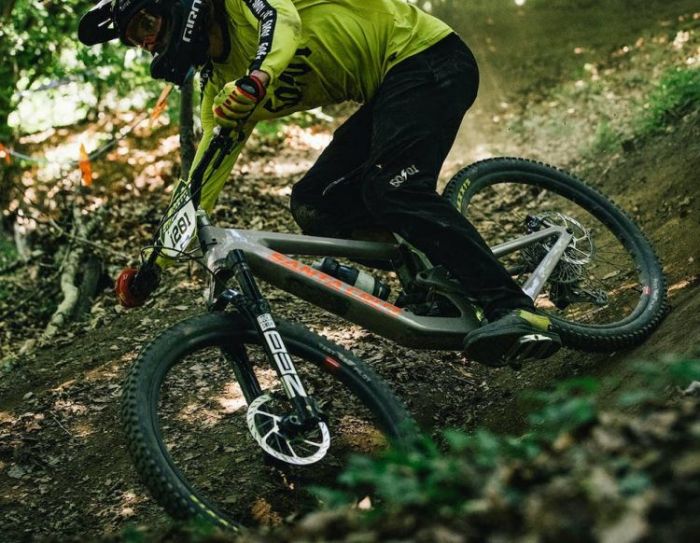Trek Farley 5 Review
- MSRP: $1,999.99
- Frame: Aluminum
- Fork: Carbon
- Tires: M-27.5×4.50” (front), 27.5×3.80” (rear)
- Drivetrain: 1×10
What we like about it: Superb value for money and well-constructed components to match, so you can have the fun of riding on forest roads all year round.
What we don’t like about it: If you like Nautical Navy to Teal Fade, then that’s not its downside.
Rating: (4.7/5)

Introduction
We have to admit that every bike has its strengths and weaknesses, so you have to combine your buying needs. As for the Fat Tire bike, we hope it will give you the most fun riding experience no matter in the snow or sandpit.
Admittedly, the most striking thing is its Trek Farley 5’s very stout, thick tires. But it is also because of them that you can conquer all kinds of forest roads, anytime, anywhere, all year round. Whether it’s snow in the winter or loose rocks or sand in the summer, the fat tires will only be crushed mercilessly. Of course, the Shimano Deore drivetrain is also not to be ignored.
To its credit, the sturdy and durable aluminum frame is perfect for a mountain bike that fights gravel and dirt.
Ride it, let it take you away from the hustle and bustle of the city, and feel the nature, and simplicity of the mountains.
Below we break down the ride, key features, components, and specifications of the Trek Farley 5, as well as the changes brought about by the model’s version change.
If you want to know more, please remember to follow us.
Trek Farley 5 Snow Riding Review
I believe most people when they think of fat tires, their first thought is probably snow riding. Fortunately, when I first owned the Trek Farley 5, it was also in the middle of winter, so let me take you through the fun of riding in the snow.
Considering that I had no previous experience riding in snow, I chose a park meadow not far from home. As the tires rolled over the snow, I could hear the “crunching” sound of the snow, much like the sound of feet on thick snow, which was interesting. Right after I got on the Trek Farley 5, it made me feel right at home. The near-upright riding position was also comfortable and gave me the courage to take on the challenge of riding in the snow.
When the tires grinded on the thick snow, I could hardly feel the tires slipping. After all, the 27.5×4.50” and 27.5×3.80” wide tires are extremely stable. Looking at such wide tires, made me want to try the wheelie on the trail maneuver. I tried to shift my weight back and slowly lift the front tire, and I did it easily. So kept pedaling and the bike slowly moved forward. It’s cool, friends! It was my first time trying this move, and it was this fat tire that gave me plenty of confidence.
I was a little worried when I first encountered the downhill. After all, the snow was slippery, so I shifted into high gear while keeping my hands on the brakes. But the Trek Farley 5 didn’t shy away. As I eased off the handbrake, the bike soon left long tire marks on the snow and my body slowly relaxed. I could feel the cold wind whistling in my ears, but the VP Components Nylon Pedal Set was great and held my feet steady. At that moment I just wanted to scream and enjoy the pleasure.
Trek Farley 5 Off-road Riding Review
I have to admit that I initially chose to buy the Trek Farley 5 because I wanted to feel the fun of riding in thick snow, but its excellent performance in the mountains made me realize that it is an all-rounder.
In general, fat tires can’t match the excellent performance of hardtail mountain bikes on rocky and misshapen mountain terrain. But it performs well on loose wooded trails or the sand. Whether it’s an XC or full-suspension mountain bike, the Trek Farley 5 is hard to beat when compared to the same price range. I’ve also taken it out in the countryside for fun, and the Trek Farley 5’s overall performance did not disappoint me on the gravel trails of the loose mountain forests.
As you know, the Trek Farley 5 is a Rigid mountain bike, so I had been concerned about its damping before. But the wide and soft Bontrager vacuum tires not only had great grip but also absorbed most of the vibration from the ground. This is what I get when I ride and my hands rarely feel the bumps from the gravel surface.
With the Bontrager Haru carbon fork and the matching TranzX JD-YSP18, 120mm travel (M size) seat post, it also filters out a lot of vibration, so I still feel relatively comfortable. Of course, I can still feel a little bump if I face intense terrain.
Also, the Shimano Deore drivetrain helped me a lot on my wilderness trips. Although there are only 1×10 gears, I can feel significantly faster and less effort when climbing in lower gears.
In addition, its giant truck-like shape looks huge, but it doesn’t weigh as much as I thought it would. After all, the Alpha Platinum Aluminum frame and carbon fork are lighter than the usual aluminum, which makes me feel very relaxed.
To its credit, the sudden rain told me that the bike could handle both potholes and slippery gravel with ease. Stable, safe, and fast is the truest feeling it gave me.
Main Features
Frame Group
It looks bulky, but the Alpha Platinum Aluminum frame and carbon fork, designed by combining a lot of ergonomics, are not only light but strong and durable enough. You no longer have to worry that the frame will break in case of an accidental fall on a mountain ride.
The Trek Farley 5 has a clean and tidy interior alignment, making it easy to clean and maintain daily, and the body looks clean and simple. Unfortunately, the Trek Farley 5 paint job only comes in a cool Nautical Navy to Teal Fade color, but if you like this color as much as I do, forget about it.
To its credit, the designer has reserved a lot of space for the frame to make it more versatile. This can meet your need to bring more adequate equipment when riding off-road. The two water bottle mounting holes at the down tube will ensure that you will never feel the taste of dry mouth again on your next trip.
Geometry
The fat tires are so striking that most people tend to overlook the Trek Farley 5’s almost perfect geometry.
First of all, the higher Stack/Reach Ratio (1.47, size M), dictates that the Trek Farley 5 has a very comfortable geometry. So you can control it in a nearly upright position. And the shorter Trail (410mm, M size) ensures that the Trek Farley 5 is nimble enough. You can easily make steering movements even in the face of sharp turns on hills.
Secondly, the loosehead tube angle (69°) gives the Trek Farley 5 a more comfortable ride, as well as a more open perspective, than the average fat tire bike. Coupled with an effective seat tube angle of 73°, the Trek Farley 5 excels at climbing.
Finally, the 313mm BB Height is high enough. This is something that allows you to be on rough trails and not have to worry about rocks hurting your shifter or the pedals rubbing against the ground in contact.
Components and Specifications
Bontrager Gnarwhal Team Issue Tires

It must be admitted that all the excellent performance of the Trek Farley 5 is due to the Bontrager Gnarwhal Team Issue tires.
First of all, the tread pattern visible to the naked eye allows the tires to bite into any surface, whether it be snow or sand.
Also, the Aggressive and siped tread provides strong enough traction. Of course, if you’re still not sure how the tires will perform on snow and ice, you can use the Bontrager tire stud tool. Installing the lightweight Bontrager tire studs will ensure that the bike has enough grip. And on ice, studded tires can provide great traction.
Secondly, Bontrager tires support both tubes and tubeless tires and offer industry-leading ease and agility in tubeless conversion. I prefer the Bontrager Gnarwhal Team Issue vacuum tires.
The biggest advantage of vacuum tires is that they can run at the lowest possible pressure because the larger tires give the bike enough traction. If the sealant is then used, it allows the tires to lose about a pound of weight.
Last but not least, the Front Hub has a 15x150mm thru-axle and the Rear Hub has a 197x12mm thru-axle. this means that you can change from 26×4.7″ to 26×5″ or 27.5×4.5 ” tires.
Shimano Deore Drivetrain
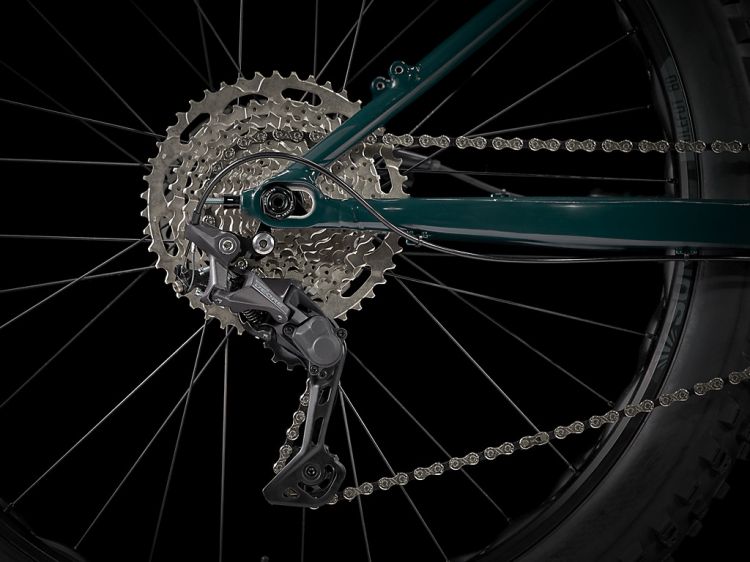
I have to admit that although there is only a 1×10 shifting system, this is a common problem with most fat tire bikes. After all, the rider doesn’t have much need for shifting, whether on snow or mountain.
Perhaps it’s not just that the rugged mountain terrain limits the speed of the bike and leaves riders without much energy to perform complex shifting operations. It’s more because Trek Farley 5 takes into account that it is the common wish of most people that the bike can move smoothly and quickly in the mountains and experience the fun of riding.
And with the Shimano Deore M4100, the 10-speed shifting system has an at-a-glance optical gear display. It can be set up for three shifts at a time, making the shifting process quick enough for the rider to complete the shifting operation without distraction. As a result, it has become an old standby for mountain bikers, and the Trek Farley 5 is no exception.
SRAM Level Hydraulic Disc
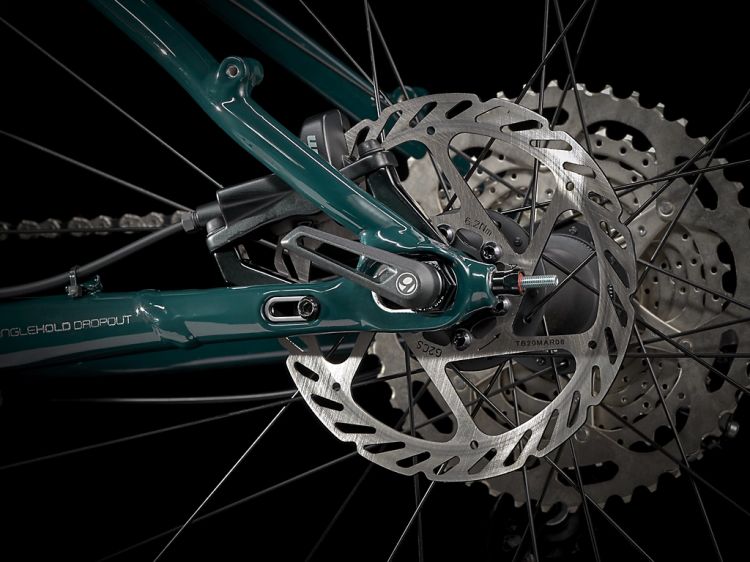
Claiming to be SRAM’s lightest and most precise two-piston braking system, it is also a presence we cannot ignore.
With stiff two-piece calipers and larger friction discs and a more aggressive organic pad compound, the SRAM Level hydraulic disc will always bring you to an immediate stop, at any moment you want to.
It is well known that disc brakes can provide better braking performance than mechanical disc brakes, and it is simple and convenient to brake with just a gentle toggle.
In addition, the most obvious advantage of disc brakes over rim brakes is that they can brake quickly without fear of rain or snow. Therefore, disc brakes are undoubtedly the best partner for this fat bike.
Other versions of Trek Farley
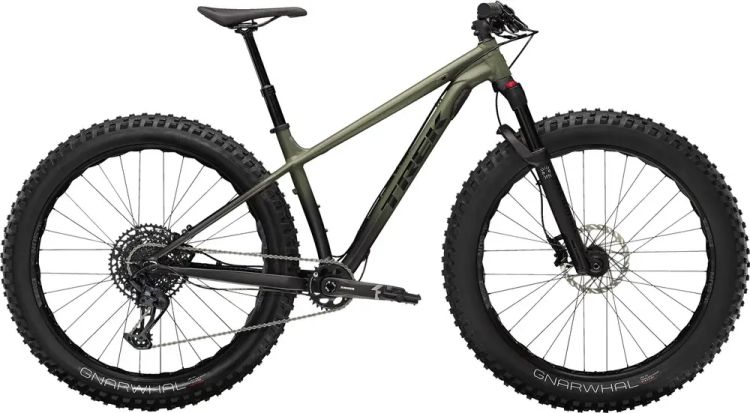
If you feel that the Trek Farley 5 is not as effective as the shock and want a faster, more comfortable riding experience, consider the Trek Farley 7.
Not only does it have the high-end Manitou Mastodon 34 Comp (80mm travel) fork, but it also comes with the more advanced SRAM GX Eagle 12-speed drivetrain. If the Trek Farley 5 still gives you bumps when you hit a steep hill, you should be nothing but happy on the Trek Farley 7.
Undoubtedly, faster speed and smoother shifting operation are what the Trek Farley 7 can bring you. Unfortunately, the frame of the Trek Farley 7 is still made of aluminum. If you want a carbon frame the Trek Farley 9.6 will also satisfy you, but that also means you will have to pay more dollars.
If you have a limited budget, Trek Farley 5 is the best choice. Although the speed and comfort, are still almost interesting, dealing with the general mountain is enough.
If you are interested in our other mountain bikes, you can see our related articles.
Learn More: Trek Farley 7 Review-Strong Contenders
What we like about it
- The wide and comfortable tires allow you to have a pleasant riding experience in all seasons without fear of any terrain.
- Bontrager Gnarwhal Fat Bike tires support the installation of tire studs, encountering slippery roads, an additional layer of protection.
- Alpha Platinum Aluminum frame with Bontrager Haru fork is strong, lightweight, and sufficiently shock absorbent.
- Hidden internal alignment.
- VP-536 nylon platform pedal, sturdy and non-slip.
- The Shimano Deore power system is fast and easy to operate.
What we don’t like about it
- The only Nautical Navy to Teal Fade color does not give the color control party more room to choose.
FAQs
- What are the tire sizes for the Trek Farley 5?
The tire size of Trek Farley 5 is M-27.5×4.50” (front), 27.5×3.80” (rear)
- What does the Trek Farley 5 drivetrain look like?
The Trek Farley 5’s drivetrain is Shimano Deore M4100, 10 speed
- What are the brakes like on the Trek Farley 5?
The brakes on the Trek Farley 5 are SRAM Level hydraulic discs.
- What are the dimensions of the Trek Farley 5?
| Size | Rider Height | Inseam |
| S | 153 – 167 cm 5’0″ – 5’6″ | 72 – 79 cm 28″ – 31″ |
| M | 161 – 175 cm 5’3″ – 5’9″ | 76 – 82 cm 30″ – 32″ |
| L | 174 – 188 cm 5’9″ – 6’2″ | 82 – 88 cm 32″ – 35″ |
| XL | 186 – 196 cm 6’1″ – 6’5″ | 87 – 92 cm 34″ – 36″ |
| 2XL | 195 – 203 cm 6’5″ – 6’8″ | 92 – 95 cm 36″ – 37″ |
Trek Farley 5 Specs
Build
| Frame | Alpha Platinum Aluminum, tapered head tube, internal derailleur & dropper post routing, rack mounts, 197x12mm adjustable horizontal sliding dropouts BB Standard: BB86/BB92, 121mm, Press Fit Tire Clearance: 4.5″ Color: Nautical Navy to Teal Fade |
| Fork | Bontrager Haru, tapered alloy steerer, OCLV Carbon lowers, 490mm axle-to-crown, 15x150mm thru axle |
| Bottom Bracket | Race Face, 121mm, PressFit |
| Headset | FSA IS-2, 1-1/8” top, 1.5” bottom |
| Stem | Size: S, Bontrager Elite, 31.8mm, Blendr compatible, 7°, 60mm length; Size: M, Bontrager Elite, 31.8mm, Blendr compatible, 7°, 70mm length; Size: L, Bontrager Elite, 31.8mm, Blendr compatible, 7°, 80mm length; Size: XL, Bontrager Elite, 31.8mm, Blendr compatible, 7°, 90mm length |
| Handlebar | Bontrager alloy, 31.8mm, 15mm rise, 750mm width |
| Saddle | Bontrager Arvada, steel rails, 138mm width |
| Seatpost | Size: S, TranzX JD-YSP18, 100mm travel, internal routing, 31.6mm, 361mm length; Size: M, TranzX JD-YSP18, 120mm travel, internal routing, 31.6mm, 403mm length; Size: L, XL, TranzX JD-YSP18, 130mm travel, internal routing, 31.6mm, 425mm length |
| Grips | Bontrager XR Trail Comp, nylon lock-on |
Wheels
| Rims | SUNRingle Mulefut 80 SL, 32-hole cutout |
| Front Hub | Bontrager alloy, sealed bearing, 6-bolt, 15x150mm thru axle |
| Rear Hub | Bontrager alloy, sealed bearing, 6-bolt, Rapid Drive 108, Shimano 10 freehub, 197x12mm thru-axle |
| Tires | Size: S, M, L, XL, Bontrager Gnarwhal Team Issue, Tubeless Ready, Inner Strength sidewalls, studdable, aramid bead, 120 tpi, 27.5×4.50”; Size: S, M, Bontrager Gnarwhal Team Issue, Tubeless Ready, Inner Strength sidewalls, studdable, aramid bead, 120 tpi, 27.5×3.80” |
| Disk Rotors | Avid G2 CleanSweep, 6-bolt, 160mm |
Groupset
| Rear Derailleur | Shimano Deore M5120, long cage |
| Crank | Size: S, Race Face Ride, 28T steel ring, 170mm length; Size: M, L, XL, Race Face Ride, 28T steel ring, 175mm length |
| Shifters | Shimano Deore M4100, 10 speed |
| Cassette | Shimano Deore M4100, 11-46, 10 speed |
| Chain | KMC X10, 10 speed |
| Brakes | SRAM Level hydraulic disc |
Video
Comparison Table
| Bicycles | Price | Gear | Gear | Brakes | Click view |
| Salsa Mukluk Deore 11 | $2,149 | 1 × 11 | 26 x 4.6″ | SRAM Level brakes, Hydraulic Disc | Click view |
| Norco Bigfoot 2 | $2,099 | 1 × 12 | 27.5×4.5″ | SRAM Level brakes, Hydraulic Disc | Click view |
| Giant Yukon 2 | $1,900 | 1 × 12 | 27.5×4.5″ | SRAM Level, Hydraulic Disc | Click view |
| Kona Woo | $2,499 | 1× 12 | 26×4.8″ | Shimano M4100 Hydraulic Disc | Click view |
Salsa Mukluk Deore 11 vs Trek Farley 5
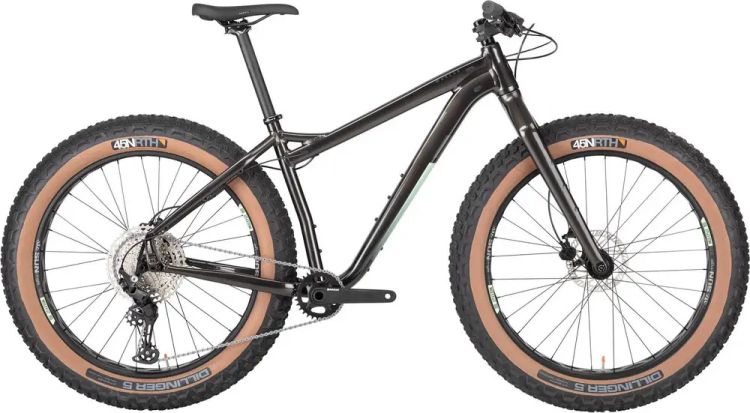
Speaking of fat tires, the Salsa Mukluk Deore 11 is also well known. Despite having smaller tires (26 x 4.6″), the Salsa Mukluk Deore 11 does not have an advantage over the Farley 5 in terms of weight. And in terms of speed performance, the two are not far behind each other.
However, although both are Rigid fat-tire bikes, the latter (Trek Farley 5) has a carbon fork and TranzX JD-YSP18 Seatpost with travel, making it more shock absorbent than the Salsa Mukluk Deore 11. Therefore, it can bring more a comfortable feeling when riding.
Last but not least, the cheaper price of the Trek Farley 5 gives me no reason not to choose it.
Fat Tire Bicycle Salsa Mukluk Deore 11 Review-Sand Buster
Norco Bigfoot 2 vs Trek Farley 5
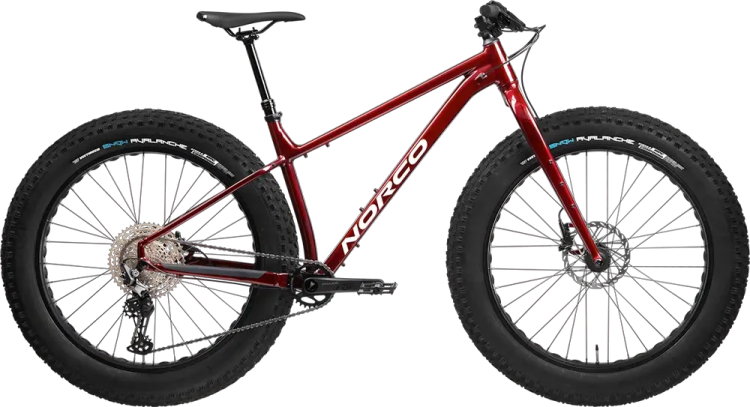
Perhaps the most impressive thing about the Norco Bigfoot 2, which also has 27.5″ tires and an aluminum frame, is its speed. To be honest, the speed of the Norco Bigfoot 2 is outstanding among fat-tire bikes in its price range.
But that doesn’t mean it’s necessarily perfect. After all, radical geometric poses are not for everyone. At least, I’m still rather worried. Because I like to ride in snow or ice, too fast and too aggressive geometry position can’t give me enough security.
Exactly how you choose depends on how you ride, and what the main riding conditions are. The Trek Farley 5 is not fast enough, but it’s good enough in general mountainous terrain.
Giant Yukon 2 vs Trek Farley 5

What impressed me most about the Giant Yukon 2 is its comforting geometry angle. The near-upright riding position is friendly enough for people who don’t like to ride bent over. But it also means that the Giant Yukon 2 has trouble supporting riders to show off their handling skills in the mountains.
Also, the Giant Yukon 2 didn’t give me much comfort as far as damping was concerned. Maybe it would be better if Giant equipped it with a dropper seat post again.
Kona Woo vs Trek Farley 5
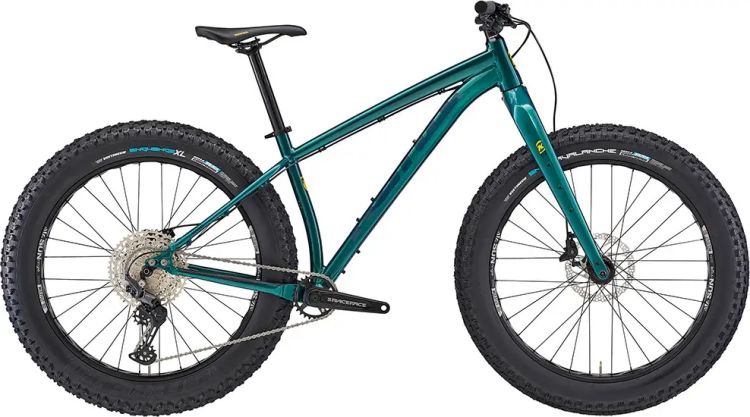
More than its not-quite-perfect geometry, the Kona Woo’s biggest criticism is probably its speed – after all, at $2,499 it’s not cheap.
Honestly, I feel that the Kona Woo’s groupset, tires’ rating, and speed, as well as comfort, may not be worth the price.
After all, users pay more money in exchange for higher comfort, and faster speeds. But clearly, the Kona Woo has not lived up to my expectations.
In case, the above comments are helpful to you, please remember to share the subscription. Have a great day!
Learn more:Top 10 Best Hardtail Mountain Bikes – For Different Budgets

![[Orbea URRUN 10 20mph Review] – Best Used By People Who Enjoy Riding To Get AFeel For The Mountains!](https://bestbikeselect.com/wp-content/uploads/2023/09/2023-Orbea-URRUN-10-20mph-35_-1024x1024.jpg)
![[Specialized Turbo Como 5.0 Review] – Good Choice?](https://bestbikeselect.com/wp-content/uploads/2023/08/2023-Specialized-Turbo-Como-5.01_-1024x1024.webp)
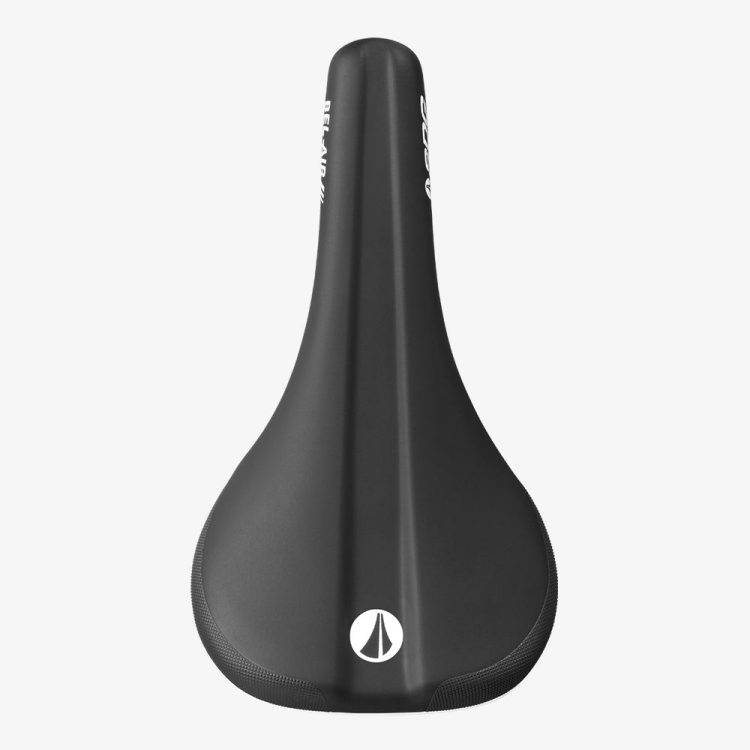
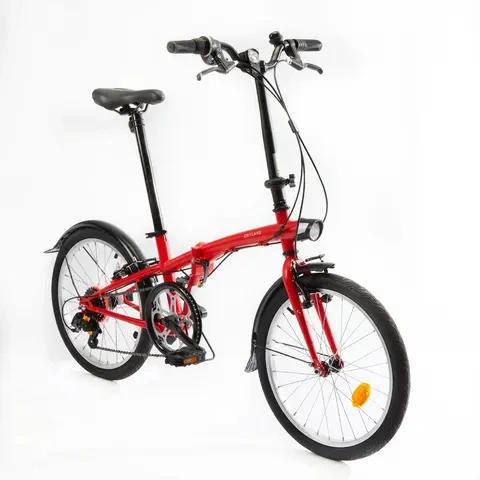

![2025 Built for Champions:[Orbea ORCA M21eTEAM PWR Review]](https://bestbikeselect.com/wp-content/uploads/2025/01/ORCA-M21eTEAM-PWR-1024x885.jpg)
![2025 Conquer Any Trail [Santa Cruz Bronson R Review]](https://bestbikeselect.com/wp-content/uploads/2025/01/Santa-Cruz-Bronson-R-1-1024x768.webp)
![2025 The All-Terrain Beast [Santa Cruz Hightower 3 MY24 Review]](https://bestbikeselect.com/wp-content/uploads/2025/01/Santa-Cruz-Hightower-3-MY24-1024x768.webp)
![The Best Comfortable Leisure Bike of 2025 [ Trek Verve 2 Lowstep Gen 5 ]](https://bestbikeselect.com/wp-content/uploads/2024/12/Verve-2-Lowstep-Gen-5-02-1024x681.png)
![2025’s Top Endurance Bikes [Cannondale Synapse Carbon 3 L Review]](https://bestbikeselect.com/wp-content/uploads/2025/01/Cannondale-Synapse-Carbon-3-L-1-1024x627.webp)
